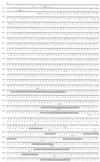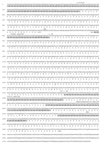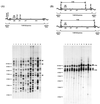Endogenous type D retrovirus in a marsupial, the common brushtail possum (Trichosurus vulpecula)
- PMID: 11160757
- PMCID: PMC114837
- DOI: 10.1128/JVI.75.5.2499-2507.2001
Endogenous type D retrovirus in a marsupial, the common brushtail possum (Trichosurus vulpecula)
Abstract
We have sequenced and characterized an endogenous type D retrovirus, which we have named TvERV(D), from the genome of an Australian marsupial, the common brushtail possum (Trichosurus vulpecula). Intact TvERV(D) gag, pro, pol, and env open reading frames were detected in the possum genome. TvERV(D) was classified as a type D retrovirus, most closely related to those of Old World monkeys, New World monkeys, and mice, based on phylogenetic analyses and genetic organization. Approximately 30 TvERV(D) proviruses are present in the genomes of possums, as detected by Southern hybridization. However, variability in fragment patterns between possums was observed and suggests recent (or ongoing) retrotranspositional activity.
Figures






References
-
- Benit L, De Parseval N, Casella J-F, Callebaut I, Cordonnier A, Heidmann T. Cloning of a new murine endogenous retrovirus, MuERV-L, with strong similarity to the human HERV-L element and with a gag coding sequence closely related to the Fv1 restriction gene. J Virol. 1997;71:5652–5657. - PMC - PubMed
-
- Berkowitz R, Fisher J, Goff S P. RNA packaging. Curr Top Microbiol Immunol. 1996;214:177–218. - PubMed
-
- Brown P O. Integration. In: Coffin J M, Hughes S H, Varmus H E, editors. Retroviruses. Cold Spring Harbor, N.Y: Cold Spring Harbor Laboratory Press; 1997. pp. 161–203. - PubMed
Publication types
MeSH terms
Associated data
- Actions
- Actions
- Actions
LinkOut - more resources
Full Text Sources
Other Literature Sources

